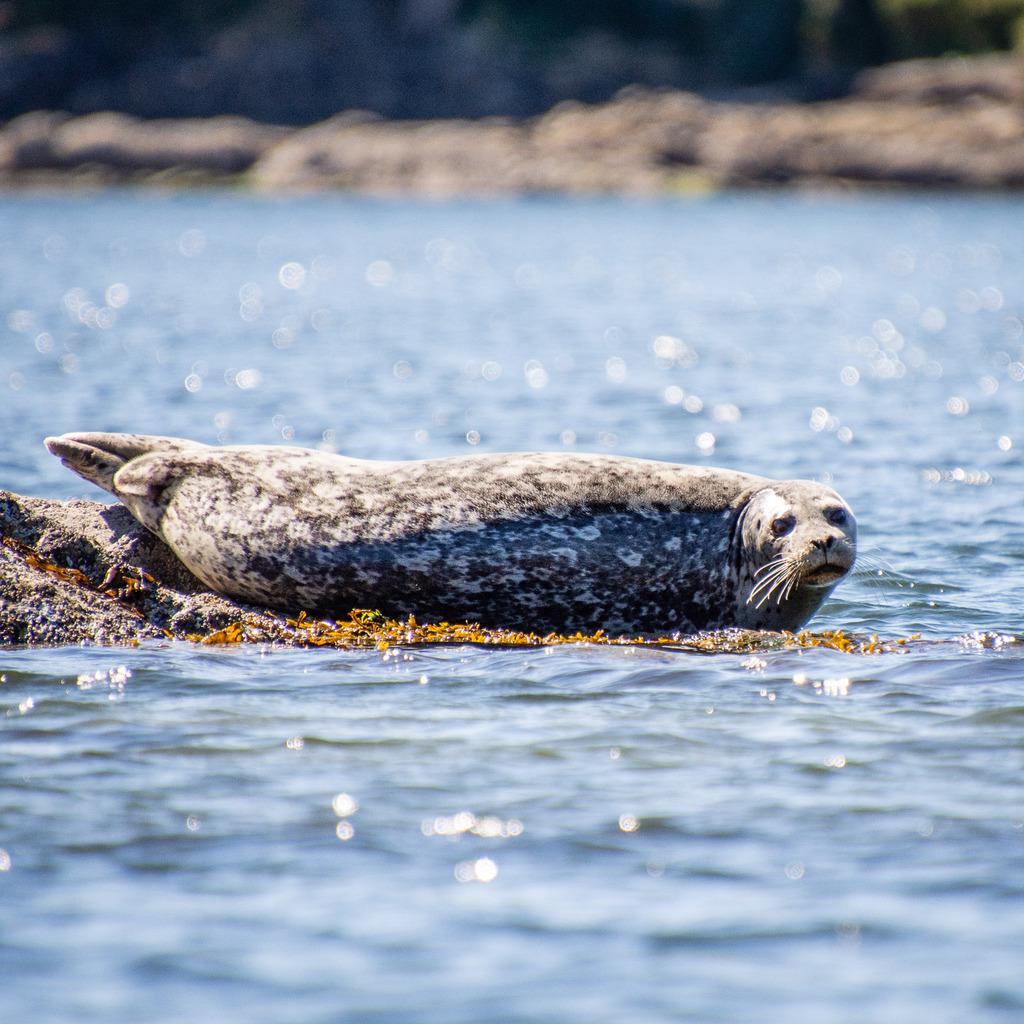Harbor Seals are found north of the equator in both the Atlantic and Pacific oceans. A small group of seals lives in the freshwater rivers and lakes of Quebec's northern Ungava peninsula. Harbor Seals gather in harbors and estuaries to hunt for fish and can often be seen lying alone or in small groups on rocky shores or islands.
Harbor Seals are 4.5-6 ft long with spotted coats in a variety of colors and weigh up to 300 lbs. They have a small rounded head and whiskery muzzle. Their short front flippers have claws for grooming and defense. They swim by moving their wide fan-like hind flippers from side to side.
Harbor Seals mate from spring to early summer when they're 3-7 years old. The females give birth to one pup (on land or in water) 9-11 months after mating.
Could it be? Sea Lions are larger and have longer flippers than Harbor Seals. Sea Lions have ear flaps while Harbor Seals don't. They can support themselves on their flippers and walk, while Seals inch forward on their belly. River Otters are sometimes found in coastal areas. They have long, slim bodies and tails and are as adept on land as in the water. Northern Elephant Seals are larger than Harbor Seals, especially the males that are over 13 ft long and can weigh up to 4,500 lbs. The males also have a large, trunk-like nose.
Did you know? Harbor Seals can swim right-side up or upside down at speeds of up to 12 mph. They can dive to depths of 300 ft and stay underwater for up to 30 minutes.
See Also: Barnacle, Blue Mussel, Clam, Crab, River Otter, Sand Dollar, Sea Anemone, Sea Jelly, Sea Lion, Sea Otter, Sea Star, Sea Urchin






